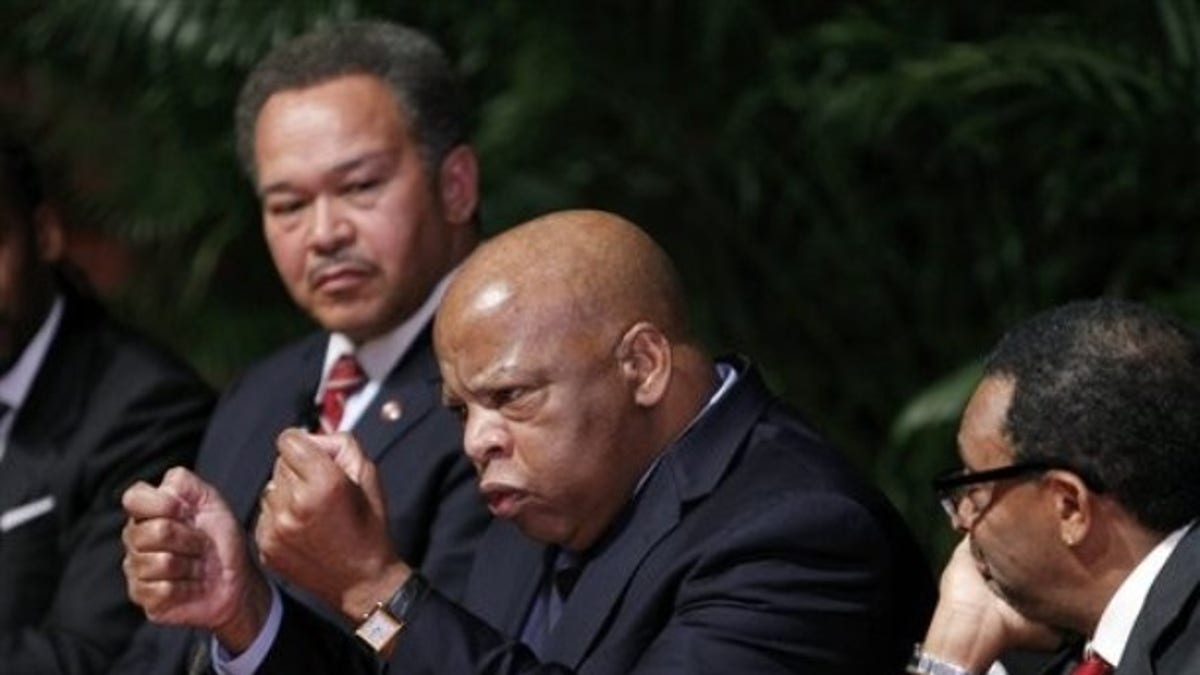
Rep. John Lewis, D-Ga. ,speaks during a meeting at Morehouse College in Atlanta, Monday, Jan. 31, 2011.
Rep. John Lewis is one of 435 members of the House interminably frustrated by the arcane ways of the Senate. At an Occupy Atlanta protest, he encountered a process arguably worse.
A lengthy video posted online over the weekend showed what happened when the Democratic congressman tried to address an "assembly" of protesters in his home state. Instead of giving the floor to a man who is not just a longtime U.S. representative but a revered civil rights icon, the protesters employed a tangle of parliamentary procedures to ultimately prevent him from speaking.
A stunned Lewis could be seen watching the whole thing unfold before ambling away.
Asked about the incident Monday, a Lewis spokeswoman told FoxNews.com "the only comment that we're going to give is the comments already made." In a prior interview about the matter with the Atlanta Journal Constitution, Lewis said, "It's okay," and that "they didn't really deny me."
The end result, though, was that Lewis did not get to speak to the protesters.
The procedures they used -- rather, invented -- would make the Senate blush. Imagine some combination of Model U.N., Lord of the Flies and a Phish concert.
The central premise, it appeared, was that no one person is inherently more valuable than anyone else. So when the group's leader, a bespectacled man with a bullhorn, said anything, he spoke in clipped fragments so the rest of the crowd could repeat what he was saying back to him. Another rule -- no clapping, because "clapping can prevent someone else who is addressing the assembly from being heard."
Instead, the leader urged everyone to use effusive hand signals to show approval.
With these fundamentals in place, the assembly spent 10 minutes debating whether Lewis should be allowed to speak before the crowd, which had gathered as one of many offshoots of the Occupy Wall Street protests in New York.
When the leader put the question to the group, he asked if there were any "blocks."
Indeed there were. Another demonstrator spoke out to say that while he respects Lewis' contribution to society, the protesters were trying to start "a democratic process in which no singular human being is inherently more valuable than any other human being."
Lewis nodded his head in approval, then appeared to display the makings of a hand signal before giving up and keeping his hands loosely clasped while the debate mounted.
After more commentary from the assembly, the leader took a "temperature check" -- which is not quite a vote. It was evident the group was divided about letting Lewis speak.
So the leader called for a "straw poll." More hand signals followed, and from this the leader was able to infer "the group is very divided about this issue."
Warning that consensus would be elusive on the matter, he proposed continuing "with the agenda."
At this point, Lewis began to make his way out of the crowd. Some started shouting, "Let him speak."
But it was not to be. Another person shouted: "John Lewis is not better than anyone! Democracy won!"
The leader closed by restating the rules. "This group makes its decisions by consensus. We do not have a consensus," he said.
They continued with the agenda.




